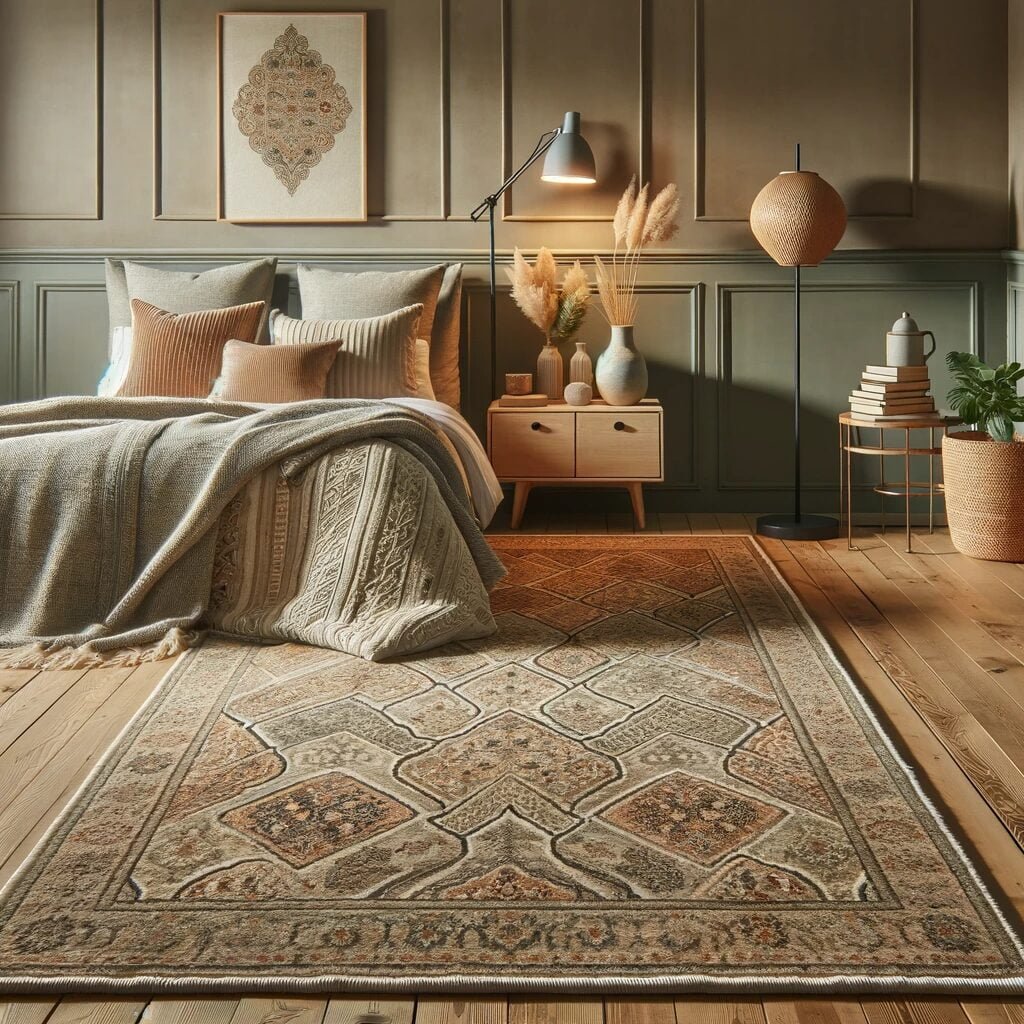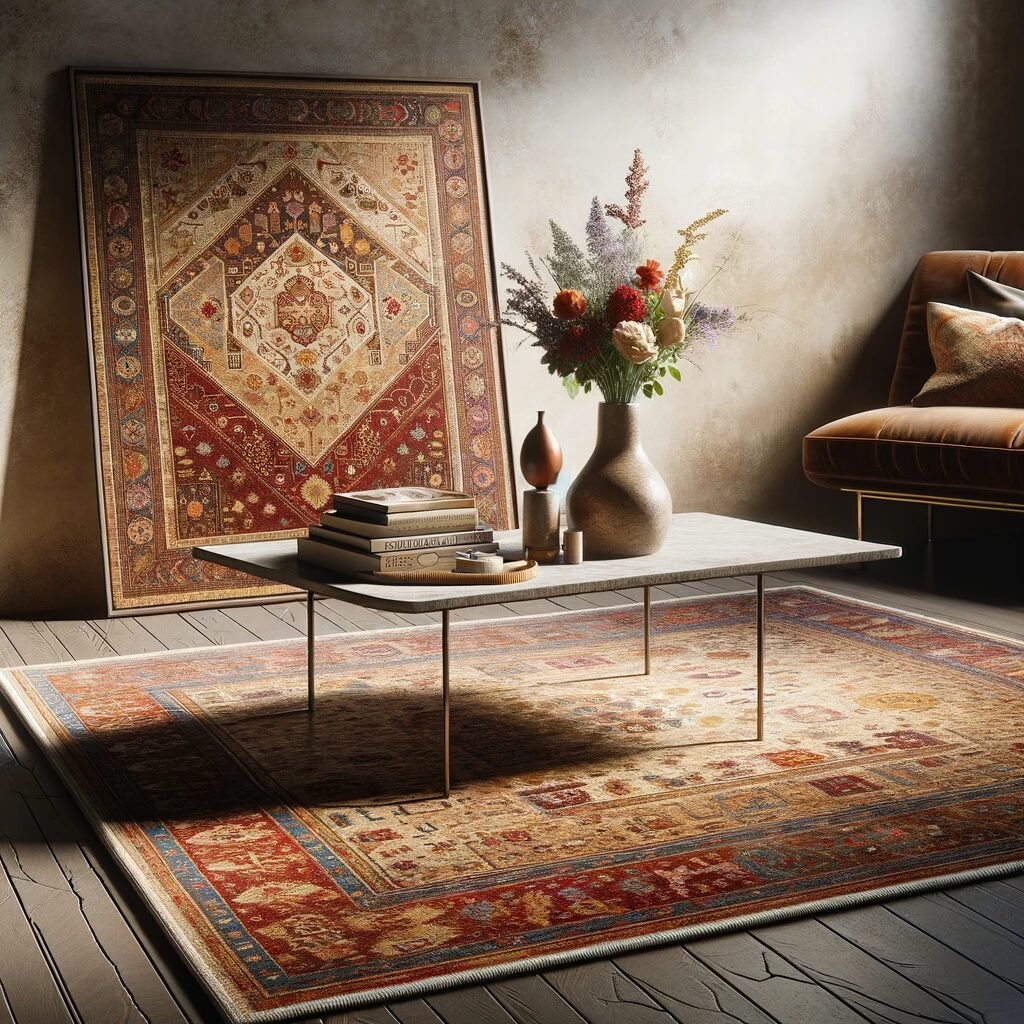For best prices and early deliveries, Contact Us : +91 94152 32525 or +91 88740 61111
Handknotted Rugs in India: A Tradition of Artistry and Craftsmanship

Handknotted Rugs in India: Handknotted rugs are a significant part of India’s rich cultural heritage. These rugs reflect an ancient tradition of craftsmanship passed down through generations, where artisans hand-weave intricate designs, knot by knot, with incredible precision. The handknotted rugs in India stand out for their durability, beauty, and cultural significance. Let’s explore the world of handknotted rugs, their designs, advantages, and why they remain a top choice for homes and businesses alike. This blog will focus on the timeless value of these rugs, featuring Mirzapur Qaleen as an essential contributor to this tradition.
Table of Contents

1. The Tradition of Handknotted Rugs in India
India has long been known for its textile art, and handknotted rugs are one of the finest examples of this tradition. Originating in the regions of Kashmir, Rajasthan, and Uttar Pradesh, these rugs tell stories through their designs, embodying regional culture and artistry. Mirzapur, in particular, is a hub for handknotted rug production, with Mirzapur Qaleen playing a crucial role in preserving and advancing this ancient craft.
What Makes Handknotted Rugs Special?
Unlike machine-made rugs, handknotted rugs involve an artisan individually tying each knot, resulting in a unique piece of art. These rugs are crafted from natural materials such as wool, silk, and cotton, enhancing their durability and luxury appeal. Each rug can take months, or even years, to complete, depending on its complexity and size.
2. Advantages of Handknotted Rugs in India
Investing in a handknotted rug comes with a myriad of advantages. From longevity to beauty, these rugs offer far more than just a floor covering.
Durability
Handknotted rugs are known for their longevity. Because each knot is tied by hand and firmly secured, these rugs can last for decades or even centuries with proper care. Many handknotted rugs become family heirlooms, passed down through generations.
Unique Designs
One of the most striking features of handknotted rugs is the intricacy and uniqueness of their designs. No two handknotted rugs are exactly alike, as artisans often incorporate regional motifs and cultural symbols. Whether it’s floral, geometric, or animal patterns, these designs add a personalized touch to your decor. Mirzapur Qaleen offers a variety of designs, each reflecting the historical significance of Indian craftsmanship.
Natural Materials
Most handknotted rugs in India are made from natural fibers like wool, silk, and cotton. These materials are eco-friendly, hypoallergenic, and resistant to wear and tear. Wool, in particular, is known for its ability to retain heat, making handknotted rugs a great addition to cold climates.
3. The Importance of Design in Handknotted Rugs
Design is a crucial element when it comes to handknotted rugs. The beauty of these rugs lies in their intricate patterns, vibrant colors, and detailed workmanship. Traditional Indian designs often feature motifs inspired by nature, such as flowers, trees, and animals. Modern designs, on the other hand, may incorporate more geometric shapes and minimalist patterns, catering to contemporary tastes.
Colors and Patterns
Colors play a significant role in the design of handknotted rugs. Indian rugs are often rich in vibrant hues, with deep reds, blues, and earthy tones being popular choices. These colors are typically derived from natural dyes, which not only look beautiful but also age gracefully. The patterns vary by region, with floral motifs being common in Kashmir rugs, while more geometric patterns are found in Mirzapur and Jaipur designs.
Customization Options
For those seeking something truly unique, handknotted rugs offer customization options. You can choose the colors, patterns, and even the size to suit your space and aesthetic preferences. This is where Mirzapur Qaleen excels, offering customers the ability to personalize their handknotted rug, making it a perfect fit for their home or business.
4. Why Choose Handknotted Rugs?
When deciding between different types of floor coverings, handknotted rugs stand out for several reasons.
Authenticity
Each handknotted rug is a work of art, crafted by skilled artisans who have perfected their trade over decades. When you purchase a handknotted rug, you’re not just buying a piece of decor – you’re investing in a piece of history and tradition.
Sustainability
Handknotted rugs are made from sustainable, natural materials, making them an eco-friendly choice. They are durable and long-lasting, which means fewer replacements and less waste over time.
Luxury and Comfort
Handknotted rugs are known for their luxurious texture and finish. Whether made from wool, silk, or a blend of fibers, these rugs offer a soft and warm feel underfoot, adding comfort and elegance to any room.
5. How to Identify Genuine Handknotted Rugs?
Given the high demand for handknotted rugs, there are many imitations on the market. Here’s how you can identify a genuine handknotted rug.
Check the Back
One of the easiest ways to differentiate a handknotted rug from a machine-made one is by checking the back of the rug. In handknotted rugs, the design on the back is a mirror image of the front, with visible knots. Machine-made rugs, on the other hand, have a more uniform and smooth backing.
Look for Imperfections
Handknotted rugs are made by human hands, and slight imperfections are a hallmark of their authenticity. These minor inconsistencies in knot size or pattern are a sign that the rug was made by hand.
Material
Genuine handknotted rugs are made from natural materials like wool, silk, and cotton. Synthetic materials are a clear sign of a machine-made rug. Mirzapur Qaleen ensures that all their handknotted rugs are made from the highest quality natural materials.
Frequently Asked Questions
1. How long does it take to make a handknotted rug?
The time to make a handknotted rug depends on its size and complexity. Smaller rugs can take a few months, while larger, more intricate designs may take over a year to complete.
2. How can I clean a handknotted rug?
Handknotted rugs should be vacuumed regularly to remove dust and debris. For deeper cleaning, it’s recommended to have the rug professionally cleaned to preserve its colors and fibers.
3. What makes handknotted rugs in India different from other rugs?
Indian handknotted rugs are renowned for their intricate designs and the skill of the artisans who create them. They often incorporate traditional motifs and natural dyes, making them unique and highly sought after.
4. Can handknotted rugs be used in high-traffic areas?
Yes, handknotted rugs are durable and can be used in high-traffic areas. However, using a rug pad underneath can help preserve its life by reducing friction between the rug and the floor.
5. Why choose Mirzapur Qaleen for handknotted rugs?
Mirzapur Qaleen is known for its exceptional quality and dedication to preserving the tradition of handknotted rugs in India. Their rugs are crafted using natural materials and showcase the highest level of craftsmanship.
In conclusion, handknotted rugs in India are more than just floor coverings; they are a representation of India’s rich cultural heritage. Whether you’re looking for something traditional or modern, a handknotted rug from Mirzapur Qaleen adds elegance, authenticity, and comfort to your space.








